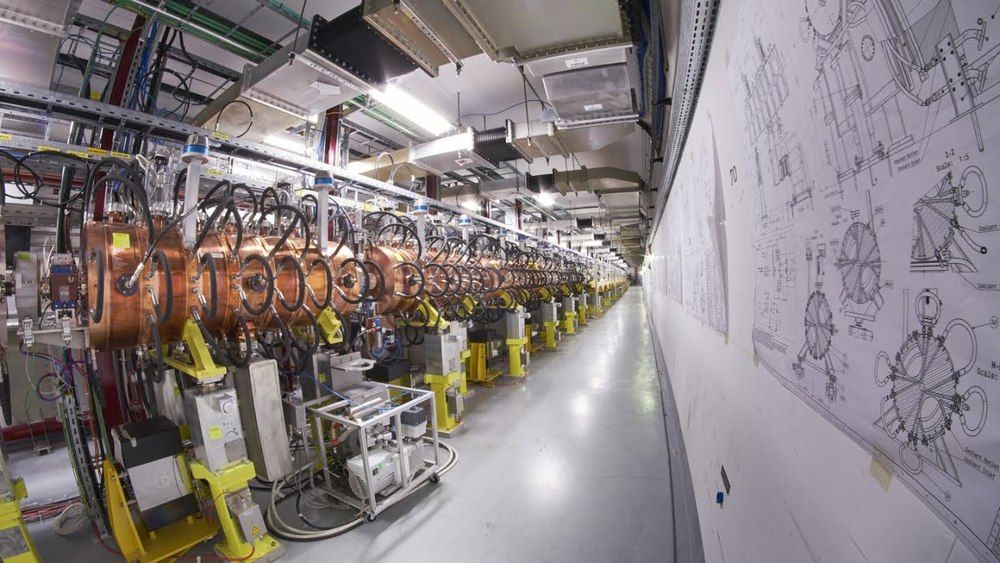The CERN Control Centre (CCC) is abuzz once again. The second long shutdown (LS2) has come to an end for CERN’s newest accelerator – Linac 4 – and the accelerator complex’s slow awakening from a two-year repair-and-recuperation hibernation has begun. The three-week machine-development run until mid-August saw low-energy beams of negative hydrogen ions (H−) fly through the first part of the accelerator for the first time since it was connected to the PS Booster. On August 20, the first beams at the nominal energy of 160 MeV were accelerated through the entire machine and into a dedicated beam dump located at the end of the linac. Over the coming months, the brand-new accelerator will finish being commissioned and will be made ready to deliver various beams to the PS Booster in December.
CERN is famous for its circular accelerators, in particular the 27-kilometer-circumference Large Hadron Collider. But the protons that circulate in these bigger machines first undergo acceleration in a humble and relatively small linear accelerator, or linac. In 2018, Linac 2, which had fed protons to CERN’s accelerator complex since 1978, was finally retired, with the 86-meter-long Linac 4 ready to take its place. But a new machine comes with new challenges for the team operating it.
The machine-development phase from late July was handled by the Accelerators and Beam Physics group (ABP) team responsible for the proton sources, who previously also ran the Linac 2 operations. “ABP made sure that we could send beam through the first structure in Linac 4, the so-called radio-frequency quadrupole or RFQ, with low beam losses,” notes Bettina Mikulec, who is leading the team from the Operations group (OP) who are responsible not only for Linac 4 but for the PS Booster as well. Over the three weeks, ABP also worked on optimizing the proton source and realigning it to get a better angle for the particles entering the RFQ. ABP then handed over the accelerator for commissioning to the team from OP.
